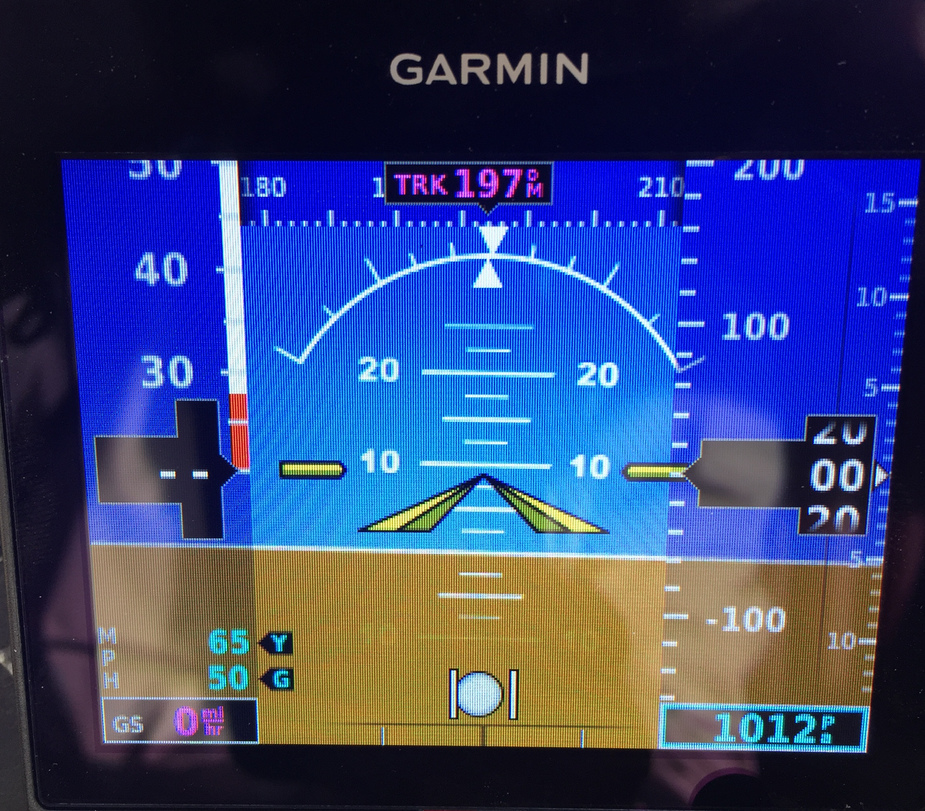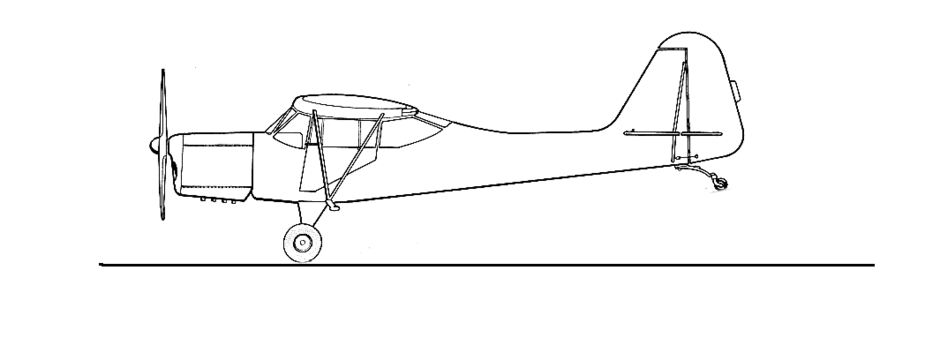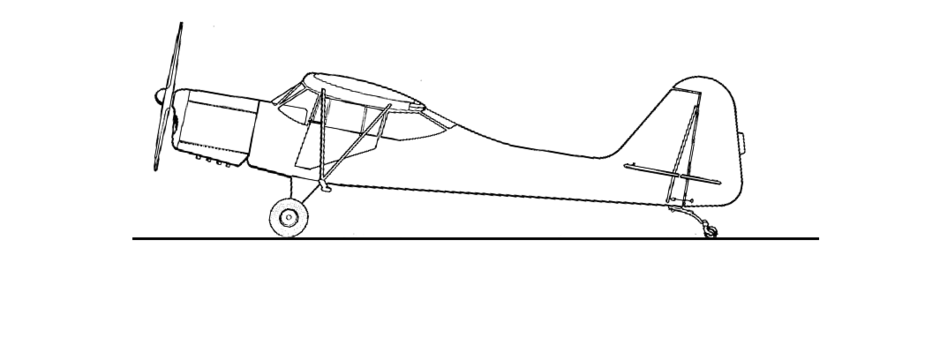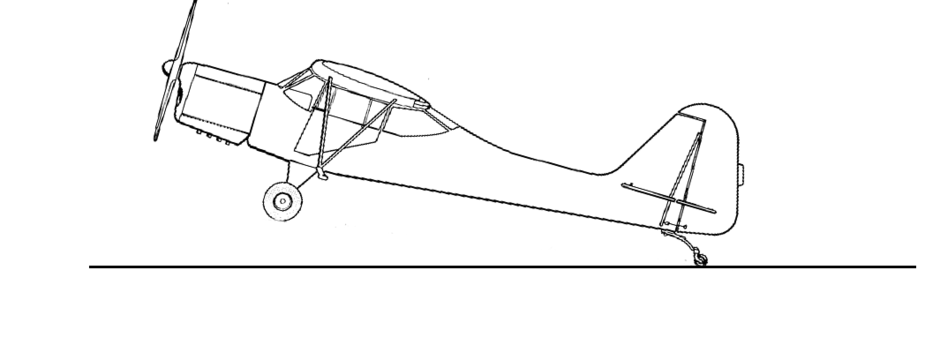There was a thread somewhere else a few days ago that somehow got onto discussing “full stall landings” and the virtues of such landings, the confusion of students about such landings and more. This eventually boiled down to the origin of the term. “It’s from the tailwheel days, because a 3-point landing is fully stalled”.
Personally, I prefer the term “minimum energy landing”. Most taildraggers aren’t actually stalled in the 3 point attitude, and you generally don’t want to stall either a tailwheel plane or a nosewheel plane, because you’ll land tail first. Of course this point got debated back and forth.
In the name of science, and as the owner of a vintage tailwheel equipped aircraft, and since I had no gliders to tow on Sunday, I decided to demonstrate the difference between a stall in the landing configuration, and the landing attitude – and to show definitively why a 3 point landing in at least one tailwheel plane is most certainly not in the fully stalled condition – and definitely not recommended if you want the tailwheel spring and attachment to have a long life!
On the ground. Unfortunately there really isn’t any part of Andreas that doesn’t slope a little bit as this image shows, but as the attitude indicator shows, it’s about 10 degrees nose up attitude with the three wheels on the ground – in other words the attitude you’re in during what people call a “full stall landing”:

This is pretty much confirmed by taking a line drawing of the Auster J1:

then rotating the image 10 degrees:

The next step is to see what a full stall is like in landing configuration – in other words, full flaps and power at idle. I did a few, but only got one decent picture – it’s kind of hard to time the picture just at the moment the aircraft actually stalls! The picture does show a slight climb, but three or four other stalling exercises with the VSI nailed at zero showed that the aircraft stalls 16 degrees nose up with the power at idle and the flaps down.

Again, a line drawing using image editing software to rotate the aircraft so it’s 16 degrees nose up, the fully stalled condition in the landing configuration:

I think anyone can agree that touching down like this is probably not optimal!
So no, a 3 point landing in a tailwheel plane is definitely not in a “full stall”. It’s better called a minimum energy landing, I think. I would imagine there are quite a number of nosewheel aircraft that will hit tail first if they are fully stalled on landing! In reality what we do is flare and then hold it off until it finally settles, if you get the flare right the wheels are barely above the ground when it settles on all three at the same time, or maybe slightly tailwheel first. (I think Maule recommends the slightly tailwheel first touchdown, @Jacko can probably confirm this). At least on hard surfaced runways, it’s best not to make a habit of landing significantly tail first in an Auster J1 since there’s only one 3/8ths Whitworth bolt holding the tailwheel assembly to the leaf spring, and too much abuse will cause this bolt to snap off inside the bearing block (leading to embarrassment at ATC airfields and probably a MOR, and in any case a great deal of swearing).
alioth wrote:
I would imagine there are quite a number of nosewheel aircraft that will hit tail first if they are fully stalled on landing!
On airliners and suchlikes that would be called a “tailstrike”. Very expensive. The alternative is to do your “full stall landing” whilst still 3 feet up after which the nose will drop and slam the aircraft onto the tarmac nosewheel first. Very popular landing technique with Piper Senecas  Again, very expensive.
Again, very expensive.
alioth wrote:
In reality what we do is flare and then hold it off until it finally settles,…
You can do that if you have the luxury of a long runway and no crosswind and no gusts. Otherwise the best landing technique is to get your wheels on the ground before you lose the ability to control the aircraft aerodynamically. At or close to the stall you are way past that point.
what_next wrote:
You can do that if you have the luxury of a long runway and no crosswind and no gusts. Otherwise the best landing technique is to get your wheels on the ground before you lose the ability to control the aircraft aerodynamically.
Well, at least in a typical light single it doesn’t result in losing control or needing a lot of runway; and it’s the way you do three point landings in a tailwheel aircraft and it results in the shortest landing length: in other words, in the aforementioned Auster J1, come over the fence at about 45 mph indicated, and hold it off above the runway and the aircraft will naturally want to touch down on all three wheels and stop in under 100m. You’ll only use a lot of runway if you come over the fence at too high of an airspeed. I used the same technique in a Bonanza when I used to fly those, and never needed a lot of runway (I used to fly our club’s Bonanza into some fairly short airfields).
The other technique (in tailwheel aircraft) is a wheel landing, which is not a minimum energy landing (and useful for gusty conditions as you can “stick” the aircraft down with some forward pressure on the stick), that does require more runway as you touch down quite a bit faster.
Airliners are a complete different discussion altogether, and having never flown one I can’t really comment.
Jacko’s health warnings:
1. As @what_next implies, this discussion concerns the kind of aeroplane which remains aerodynamicallycontrollable with a substantial part of the wing stalled. We sometimes say that these aeroplanes “mush” rather than “stall”, but what we mean by that is that they don’t depart from controlled flight, although they may have -1,000 fpm on the VS, equivalent, perhaps, to a 10-15 degree downward flightpath. A Maule MX-7 will do this; carb heat, throttle closed, full (48 degrees) flap, yoke fully back, steer with rudder and the ridiculous machine will “fly” perfectly happily at -1,000 fpm and 40 knots IAS, which is about a 14 degree slope.
2. For many aeroplane pilots this technique must be as pointless as learning to hover a helicopter, albeit not quite as humbling. It is similarly not without risk. Nevertheless, it’s fun to practise it at altitude, for however many hours it takes to perfect it.
3. If we approach terra firma at -1,000 fpm, we need landing gear which is fit for purpose and/or some way of slowing the descent before contact.
alioth wrote:
Most taildraggers aren’t actually stalled in the 3 point attitude
which is true, in level flight, but we mustn’t confuse “attitude” with “angle of incidence”.
On approach to land, we will probably follow a 6 degree downward flightpath, depending on the characteristics of the wing and how deeply into the “mush” it remains aerodynamically controllable. If our airsped is 40 knots (4,000 fpm), our vertical speed will be about 420 fpm, which is fine if we have proper undercarriage, and if we master the technique of arresting the descent with a burst of full power and lowering the nose (to increase the lift).
So, adding those 6 degrees to the Auster’s 10 degree “3-point” attitude, we have an angle of incidence which is pretty close to the 16-degrees mentioned above.
Jacko wrote:
So, adding those 6 degrees to the Auster’s 10 degree “3-point” attitude, we have an angle of incidence which is pretty close to the 16-degrees mentioned above.
But does that really happen? By the time you’ve transitioned to the 3 point attitude, you’re back in level flight – having completely arrested the descent rate – with an AoA of probably about 11 degrees – especially on the typical power off three point landing where you make a smooth transition to a 3 point attitude and considering ground effect (which is noticeable even in many high wing planes).
During the round-out the glide path is going to shallow out, meaning you can’t really just add 6 degrees to the AoA on the last bit of the glide.
Anyway, the G5 keeps logs. I’ll have to dump the logs and if they are taken at a sufficiently high sampling rate I could derive something from them…
The burst of power type of back country landings also complicates things a bit, since the burst of power will inevitably lower the stall speed (power on, I can get the Auster to fly about 3 or 4 mph slower in landing configuration, than with the power at idle).
alioth wrote:
“It’s from the tailwheel days, because a 3-point landing is fully stalled”.
Who on earth would argue that? Anyone who has flown a Pitts will know that it is far from stalled and far being out of energy in the 3-point landing attitude, just to point to a very obvious example
mmgreve wrote:
Who on earth would argue that?
Quite a lot of people, actually!
My preference is a tail low wheel landing in the PA18, and while not stalled your touchdown speed is around 45 mph, and it makes for the smoothest arrivals.
Ground effect lowers the critical angle, as do flaps, so while the vintage wing designs probably have an idle power critical angle of attack of 16-18 degrees, with flaps and ground effect this may be more like 13-14 degrees, less the 1-2 degrees of incidence for your pitch attitude – so the three point attitude is quite close to critical angle in ground effect, at least for Champs/Cubs etc.
Land the plane by flying it onto the runway…
The ground atttude of a tailwheel aircraft in relation to stall angle of attack varies from type to type. I have landed some that are are essentially flown onto the ground even in 3-point attiude… for instance the Culver Cadet with its short, retractable main gear and slotted wing. Other types like the Luscombe are landed 3-point by waiting patiently until the plane slows to stall speed at very low height, then pulling the stuck fully aft in a fairly brisk manner… which is exactly how you stall the plane at high altitude. Once you pull the stick to the aft stop you don’t let it off the aft stop and it ‘falls’ ker-plunk onto the ground.